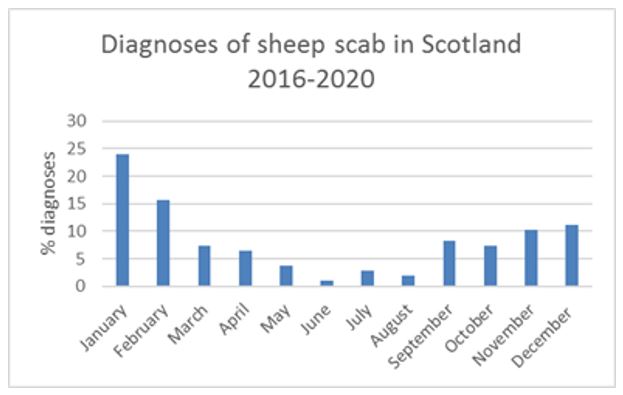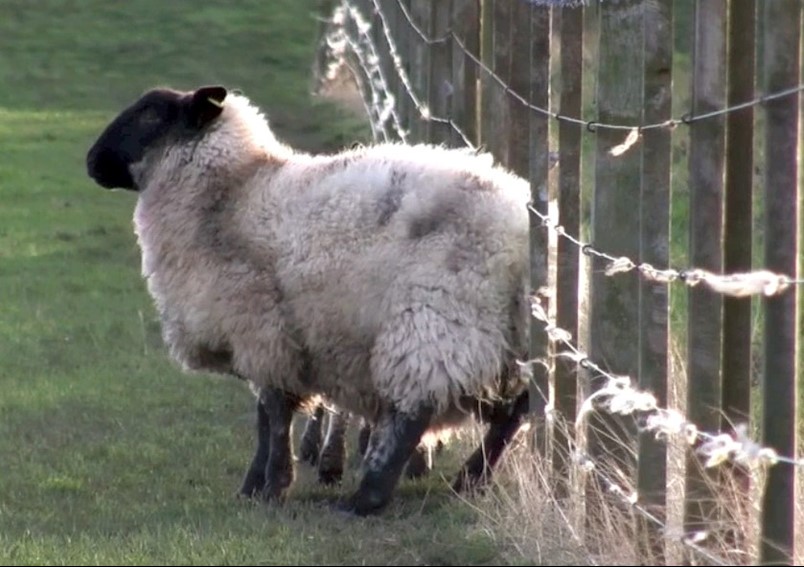Sheep Scab Resistance – A Developing Problem
26 March 2021Psoroptes ovis otherwise known as sheep scab is thought to be the most contagious parasitic disease in sheep and has significant detrimental effects on welfare and production. It causes severe itchiness, crusting skin lesions and intense irritation in affected sheep and is often associated with marked wool loss. The level of discomfort can be so severe that reduced feed intakes lead to dramatic condition loss. In Scotland, sheep scab is a notifiable disease, and any suspicion must be reported and fully investigated. SRUC veterinary services delivers free testing for the diagnosis of sheep scab and, following discussion with your vet welcome submission of wool samples from suspected cases.
Diagnosis
Diagnoses peak over the winter months and sheep returning from winter grazing pose a real risk to introducing mites to the remaining flock at home. Accurate diagnosis by examining skin scrapings or wool samples is essential as other causes skin irritation for example lice require different treatments. A blood test to detect antibodies against scab mites is also available however this is indicative of exposure rather than current infection.
Treatment
In recent years, injectable macrocyclic lactones (ML) have become a popular method of controlling and treating sheep scab. The only other licenced treatment is an organophosphate (OP) plunge dip containing diazinon. This can only be bought, used and disposed of under licence and it is important to note that it is for use as a plunge dip only and showers or jetters do not provide enough coverage for it to be effective.
ML’s are also active against intestinal worms and over or inappropriate use will encourage development of resistance. Resistance in scab mites to moxidectin (a ML) was first reported in 2018 and resistance to other injectable products is likely to develop in the future. It is therefore important scab is confirmed before treatment is undertaken to avoid unnecessary use. Secondly, it is important to consider the duration of action or persistence that the selected drug provides. Scab mites can remain infective on fences, handling facilities and discarded wool for up to 17 days. The product used therefore either has to have a persistence of over this time period or a second treatment may be required. This information will be available on the product data sheet and should be discussed with your vet. If clinical signs persist following treatment it is imperative that these are investigated. It is a good idea to have a quarantine protocol in place for the control of external and internal parasites in sheep returning from wintering.
Megan Fergusson, megan.fergusson@sruc.ac.uk
Sign up to the FAS newsletter
Receive updates on news, events and publications from Scotland’s Farm Advisory Service


